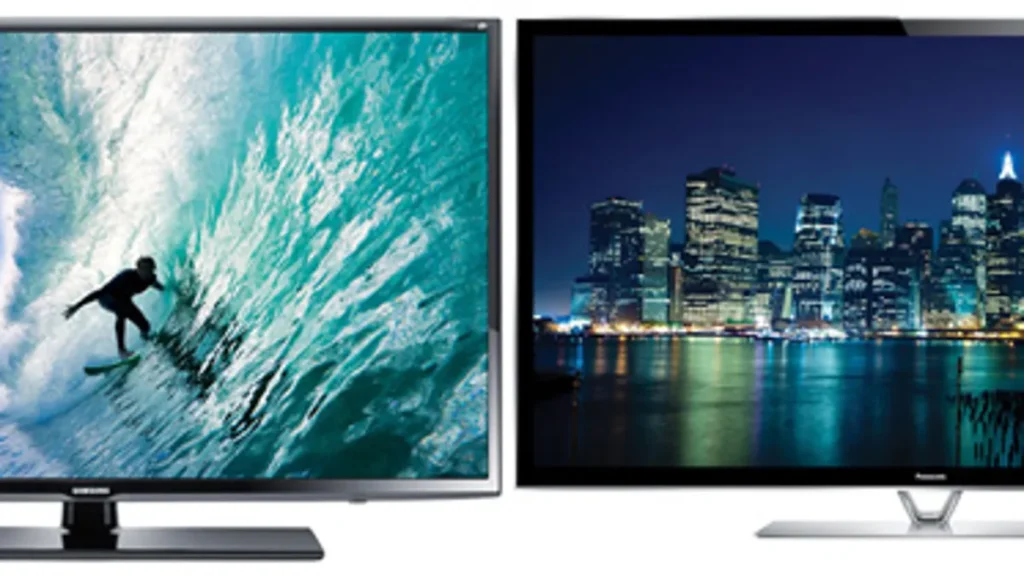LED vs LCD: Unveiling the 7 Critical Differences for a Superior Viewing Experience
In the realm of digital displays, the terms LED and LCD are often used interchangeably, leading to considerable consumer confusion. While they are closely related, a fundamental difference in their backlighting technology sets them apart, resulting in significant disparities in picture quality, energy consumption, and overall performance.1 This comprehensive guide will delve into the intricacies of LED and LCD technologies, helping you make an informed decision for your next television or computer monitor purchase.
The Core Distinction: It’s All About the Light
At its heart, the battle between LED and LCD is a story of illumination. Both technologies utilize a Liquid Crystal Display (LCD) panel to create images. This panel is composed of a series of liquid crystals that can be electronically manipulated to either block light or allow it to pass through.2 The crucial difference lies in the source of this light.
Traditional LCDs, often referred to as CCFL LCDs, use Cold Cathode Fluorescent Lamps as their backlight.3 These are essentially small, tube-like fluorescent lights positioned behind the LCD panel.4 They illuminate the entire screen at once, and the liquid crystals then work to create the image by selectively blocking this constant light source.5
LED displays, on the other hand, are more accurately described as LED-backlit LCDs. They employ an array of Light-Emitting Diodes (LEDs) as their backlight instead of CCFLs.6 This seemingly minor change has profound implications for every aspect of the display’s performance. The move to LED backlighting has been a significant step forward in display technology, paving the way for thinner designs and improved picture quality.7
A Deeper Dive into LED Backlighting Technologies
Not all LED displays are created equal. There are two primary types of LED backlighting, each with its own set of advantages and disadvantages:
-
Edge-Lit LED: In this more common and cost-effective configuration, the LEDs are placed along the edges of the screen.8 The light is then diffused across the entire panel.9 This design allows for incredibly thin and lightweight displays. However, achieving uniform brightness across the entire screen can be a challenge, and it may result in less precise local dimming.
-
Full-Array LED: As the name suggests, this technology features a grid of LEDs positioned directly behind the entire surface of the LCD panel.10 This allows for more precise control over the brightness of different sections of the screen, a feature known as local dimming. By dimming or brightening specific zones of LEDs, full-array displays can produce deeper blacks, higher contrast ratios, and a more dynamic and realistic image.11
For those seeking the pinnacle of picture quality, exploring the world of OLED and QLED technologies can provide further insights into the latest advancements in display technology.
Performance Showdown: LED vs. LCD
Now, let’s break down how these technological differences translate into real-world performance across several key metrics:
Picture Quality: A Clear Win for LED
When it comes to picture quality, LED displays, particularly full-array models, hold a significant advantage over their CCFL LCD counterparts.12
-
Contrast and Black Levels: The ability to locally dim the backlight gives full-array LED displays the power to produce much deeper and more convincing black levels.13 When a scene calls for darkness, the corresponding LEDs can be dimmed or even turned off completely, resulting in a stark and realistic contrast between light and dark areas. CCFL LCDs, with their constantly illuminated backlight, can only approximate black by blocking the light, which often leads to a grayish or washed-out appearance.
-
Color Accuracy and Vibrancy: LED backlights are capable of producing a wider and more accurate range of colors than CCFLs. This results in images that are more vibrant, lifelike, and true to the creator’s intent. For professionals in fields like graphic design and photography, the superior color reproduction of a high-quality LED monitor is a critical requirement. Many modern LED displays offer extensive calibration options to fine-tune color accuracy.14
-
Brightness: LEDs can generate a significantly brighter image than CCFLs. This is particularly beneficial in well-lit rooms, where the extra brightness helps to overcome ambient light and reduce glare.15
Energy Efficiency and Lifespan: The Eco-Friendly Choice
LEDs are champions of energy efficiency.16 They consume considerably less power than CCFLs to produce the same level of brightness.17 This not only translates to lower electricity bills but also a reduced environmental footprint. According to the U.S. Department of Energy, LED lighting can be up to 80% more efficient than traditional lighting technologies.18
Furthermore, LEDs have a much longer lifespan than CCFLs.19 An average LED backlight can last for 50,000 to 100,000 hours, while a CCFL backlight typically has a lifespan of 30,000 to 60,000 hours. This longevity makes LED displays a more durable and cost-effective investment in the long run.
Design and Form Factor: Thinner and More Versatile
The compact nature of LEDs has allowed manufacturers to create significantly thinner and lighter displays. Edge-lit LED technology, in particular, has been instrumental in the development of the ultra-slim televisions and monitors that are common today. This sleek design aesthetic is often a major selling point for consumers.
Specialized Applications: Gaming and Professional Use
The choice between LED and LCD can also be influenced by the intended application.
For the Gamers:
In the fast-paced world of gaming, every millisecond counts. LED displays, with their faster response times and higher refresh rates, are the clear winners for gamers. A lower response time reduces motion blur and ghosting, resulting in a smoother and more immersive gaming experience.20 Many gaming-focused LED monitors also incorporate technologies like AMD FreeSync or NVIDIA G-Sync to eliminate screen tearing and stuttering. For a deeper dive into what makes a great gaming monitor, checking out resources like PC Gamer’s hardware guides can be incredibly helpful.
For the Creative Professionals:
For photographers, videographers, and graphic designers, color accuracy is paramount. High-end LED monitors, especially those with IPS (In-Plane Switching) panels, offer the wide color gamuts and precise color reproduction necessary for professional work.21 The ability to calibrate these monitors to specific color spaces, such as Adobe RGB and sRGB, is an essential feature for a color-critical workflow.
The Verdict: Is LED Always the Better Choice?
Given the numerous advantages of LED technology, it’s clear why it has largely replaced CCFL LCDs in the market. The superior picture quality, enhanced energy efficiency, and sleeker designs make LED displays the preferred choice for the vast majority of consumers and professionals.
While budget-friendly CCFL LCDs may still be available, the price gap between the two technologies has narrowed significantly over the years.22 In most cases, the small additional investment for an LED display is well worth the substantial improvements in performance and longevity.
When making your final decision, consider your primary usage, your budget, and the importance of picture quality and energy efficiency. For an in-depth look at monitor reviews and recommendations, websites like DisplayNinja offer a wealth of information to guide your purchase.
In conclusion, while all LED displays are technically LCDs, the adoption of LED backlighting represents a pivotal evolution in display technology. By understanding the fundamental differences between LED and traditional CCFL LCDs, you can confidently choose a display that will provide a truly exceptional viewing experience for years to come.
Want more ? Check out our latest posts !


